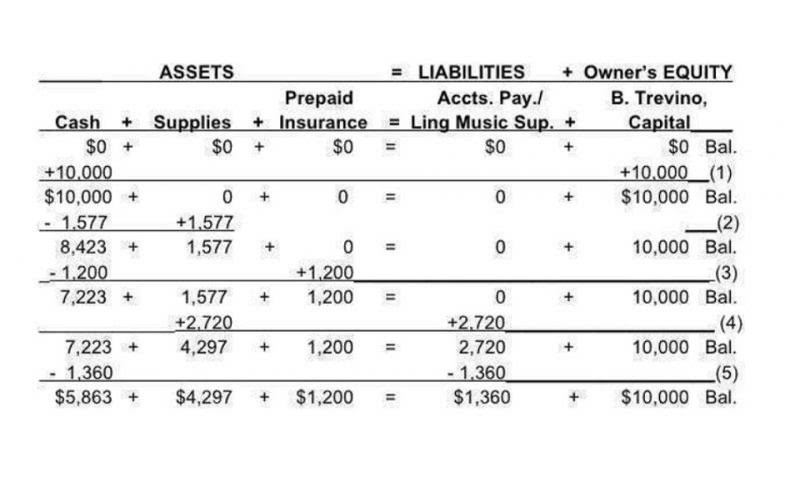CFI is the global institution behind the financial modeling and valuation analyst FMVA® Designation. CFI is on a mission to enable anyone to be a great financial analyst and have a great career path. In order to help you advance your career, CFI has compiled many resources to assist you along the path. However, based on IFRS, Building was initially booked at its original cost and then depreciated based on its economic use or at the fair value per the revaluation model. An estimate of the price at which an asset would trade in a competitive auction setting.
- This can lead to an understatement of the true economic value of assets on the balance sheet.
- The historical cost principle is critical because it provides a reliable, consistent, and verifiable way to record assets, which is essential for trustworthy financial reporting.
- This method is commonly used for financial instruments like stocks and bonds, where market prices are readily available and fluctuate frequently.
- By following established cost principles, organizations can maintain consistency in their financial records and ensure compliance with regulatory and contractual requirements.
- Because cost accounting often undervalues the assets on a business’s balance sheet, it can lead to the business itself being dramatically undervalued.
- By tying depreciation and amortization to historical cost, the income statement remains consistent and compliant with GAAP and IFRS, ensuring that financial performance is accurately represented over time.
Closing Month Of Accounting Year: Definition & How To Choose For Your Business

To apply the cost concept properly, one must be able to identify various types of costs. These classifications are necessary for analyzing, budgeting, and strategizing business operations. Objectivity and VerifiabilityRelies on actual transaction data, making the initial QuickBooks ProAdvisor valuation objective and easy to verify through invoices or contracts.
205-16 Gains and losses on disposition or impairment of depreciable property or other capital assets.

The historical cost principle prioritizes accounting consistency over market realities, which can sometimes lead to discrepancies between book value and actual value. Unlike historical cost, which remains fixed on the balance sheet, the asset basis can change over time due to depreciation, amortization, or other adjustments. For instance, if the truck is depreciated by $6,000 after two years, its adjusted basis becomes $25,500. If the business sells the truck for $28,000, the taxable gain is $2,500 ($28,000 minus $25,500).
- The financial accounts will still report the asset’s worth at the cost of acquisition because the historical cost principle does not take currency swings into account.
- It’s important to note that while the Cost Principle is the primary method of valuing assets, there are cases where assets may need to be revalued.
- The historical cost principle ensures that the starting point for these calculations is consistent and verifiable, aligning with GAAP and IFRS standards.
- The cost concept states that a business records an asset at its original purchase price plus all related costs, disregarding any changes in market value after that date.
- Therefore, any changes in the asset’s market value should not affect how they are represented on the balance sheet.
Time Period Principle
While they know your building might be worth more than its historical cost, they appreciate the conservative, verifiable approach to valuation. When you use the cash basis of accounting, the recordation of accounting transactions is triggered by the movement of cash. Thus, revenue is recognized when cash is received, and supplier invoices are recognized when cash is paid. This means that the matching principle is ignored when you use the cash basis of accounting. Service life means the period of usefulness of a tangible capital asset (or group of assets) to its current owner.

The cost principle might not reflect a current value of long-term property after so many years. For example, a building could be worth a different price now than it was 50 years ago. The market value could have changed between the initial purchase and when you sell the item. The different values can make it harder to determine your company’s financial health.
Historical cost includes the purchase price of an asset, plus any other costs incurred to bring the asset to the location and condition needed to make it function as intended. This can include a number of additional costs, including transport costs, freight in, the cost to demolish existing structures and install a concrete pad for the asset, and test it to ensure that it functions as cost principle accounting definition intended. Despite this limitation, the historical cost principle remains valuable for its reliability and verifiability. It avoids the complexity and subjectivity of adjusting for inflation, ensuring that financial statements remain consistent and comparable, even if they don’t fully capture inflationary effects. On the other hand, mark-to-market accounting can provide a more accurate picture of current value but is riskier in volatile markets. During the 2008 financial crisis, for instance, banks using mark-to-market accounting faced significant challenges as the value of their assets dropped sharply, leading to massive write-downs and financial instability.

Part 31 – Contract Cost Principles and Procedures
Being able to explain your fixed assets business’s finances to lenders and investors is crucial to expansion and success. Aside from updating the values of depreciating assets, cost accounting means you do not need to bother updating the values of large assets on your balance sheet. Cost accounting can also prevent you from overestimating the values of your assets, which is important if you’re seeking financing or considering a merger or acquisition. This is a practical method of accounting when considering depreciation and its effects on the business. It allows the value of an asset to remain the same over its useful life.

